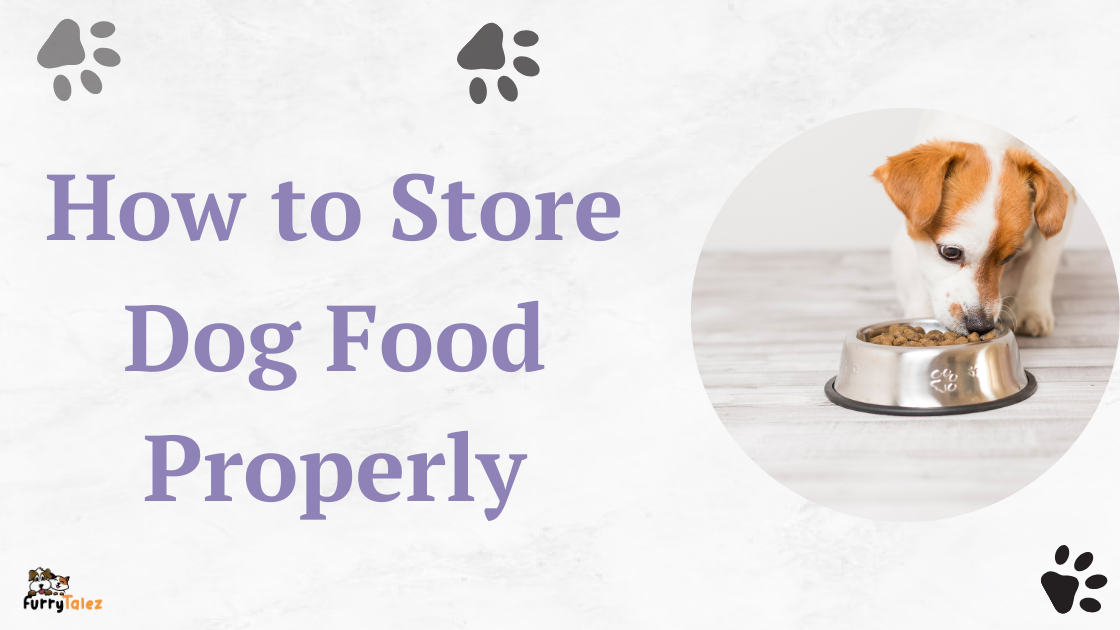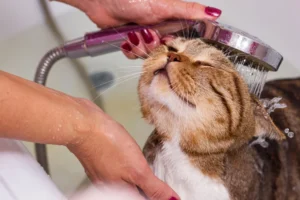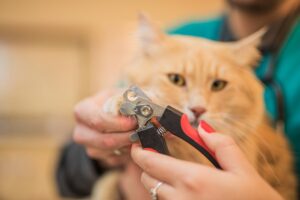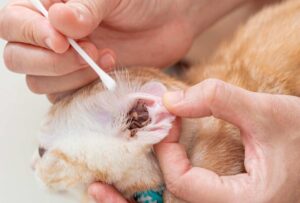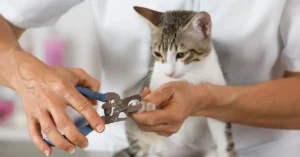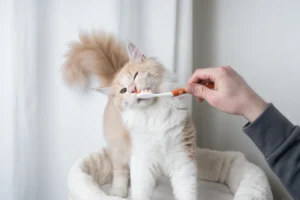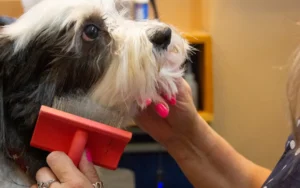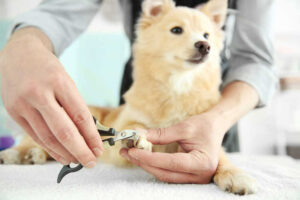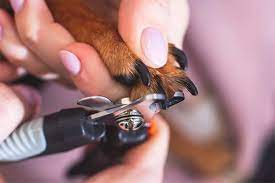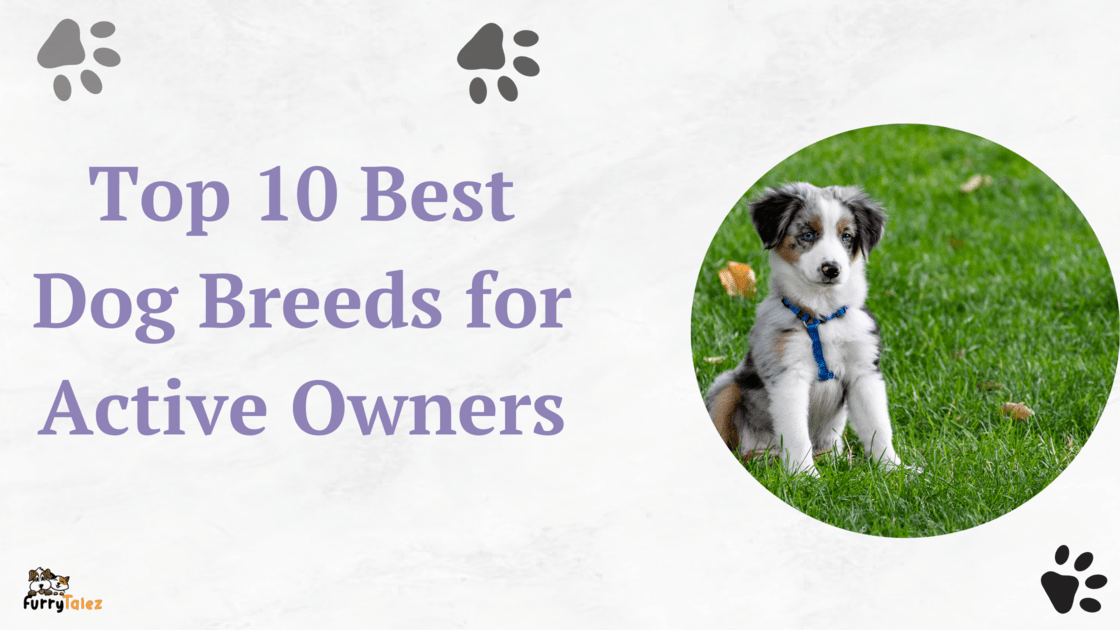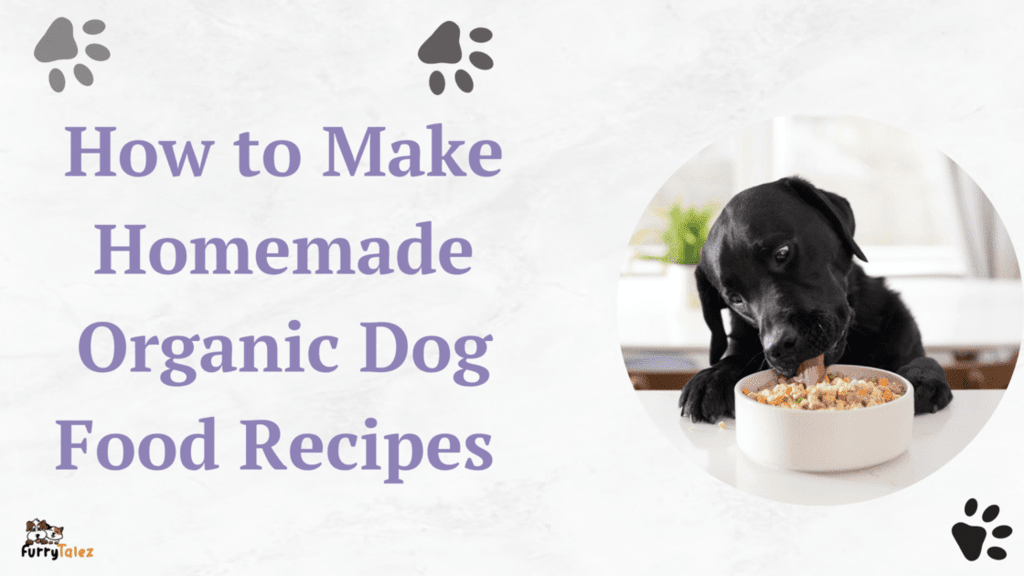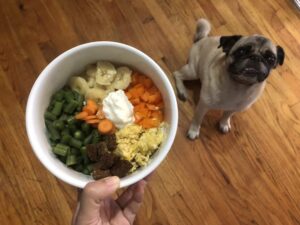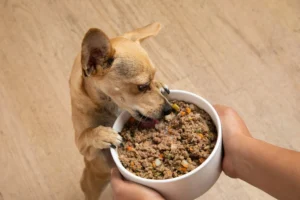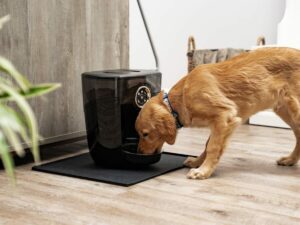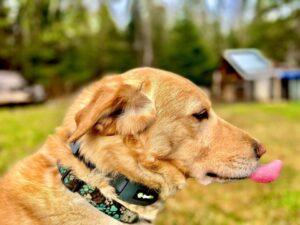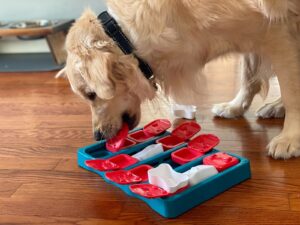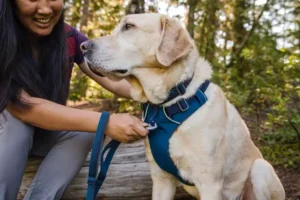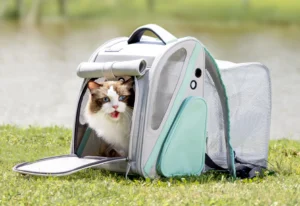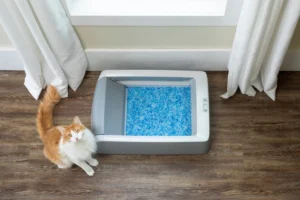As responsible pet owners and parents, ensuring that our dogs receive the best nutrition possible is a top priority and ensuring their well-being is paramount, and one often overlooked aspect is how to properly store their food.
Table of Contents
Introduction
Furry Talez has been your faithful companion, wagging tails and offering unconditional love. At Furry Talez, we understand the importance of feeding our furry companions high-quality dog food that meets their dietary needs. However, maintaining the quality and freshness of dog food requires proper storage practices. Proper storage not only maintains its freshness but also ensures the safety of your furry friend. In this blog post or a comprehensive guide, we will explore the best methods to store dog food, ensuring that your canine friend gets the most out of every meal. Let’s delve into the art of storing dog food effectively.
How to Store Dog Food Properly
Why Proper Storage of Dog Food is Essential?
Understanding the Importance of Proper Storage

Proper storage of dog food is crucial for several reasons. Dog food is more than just a meal for our furry companions, it’s their source of nutrition and energy. Improper storage can lead to spoilage, contamination, and loss of essential nutrients. By storing dog food correctly, you’re not only preserving its quality but also safeguarding your pet’s health and happiness.
First and foremost, it helps maintain the nutritional value of the food. Exposure to air, moisture, and heat can degrade the essential nutrients in dog food, making it less beneficial for your pet. Additionally, improper storage can lead to contamination by pests, such as insects and rodents, or the growth of mold and bacteria, which can pose serious health risks to your dog.
At Furry Talez, we emphasize the importance of storing dog food correctly to preserve its quality and ensure the well-being of your furry friend. Whether you opt for dry kibble, wet food, or raw diets, the following tips will help you keep your dog’s food fresh and safe.
Tips for Storing Dry Dog Food: Tips and Tricks You Need to Know
Choose the Right Container: Choosing the Right is Important:

When it comes to storing dog food, the right container can make all the difference. The type of container you use to store dry dog food can make a significant difference in preserving its freshness. At Furry Talez, we recommend using airtight containers made of plastic, stainless steel, glass, or metal. These containers prevent air and moisture and pests from getting in, from compromising the quality of the food, which can cause the food to go stale or become moldy. Ensure that the container is clean and dry before transferring the dog food into it. Additionally, choose containers that are easy to clean to maintain hygiene standards.
The Role of Temperature and Location: Managing Moisture and Humidity

Just like human food, temperature and humidity plays a crucial role in preserving and maintaining the quality of dog food. Store the food container in a cool, dry place away from direct sunlight. Avoid areas with fluctuating temperatures, such as near the stove or refrigerator, garages or near heat sources like ovens and radiators, as these can accelerate the food’s degradation. A pantry or cupboard is an ideal spot for storing dog food, ensuring it remains fresh and appetizing for your furry companion. Consistent, moderate temperatures help preserve the food’s nutritional integrity.
Moisture is the enemy when it comes to storing dog food. Even small amounts of moisture can lead to mold growth and spoilage. To combat this, consider using moisture-absorbing packets or silica gel packs in the storage container. Additionally, refrain from storing dog food in areas prone to high humidity, such as the basement or garage. Keeping the food dry is essential for maintaining its quality and safety.
Keep the Original Packaging: Proper Sealing Techniques

Whenever possible, keep the dry dog food in its original packaging and place the entire bag into the airtight container. Once you’ve transferred the dog food into a suitable container, ensure it’s tightly sealed to prevent any air from entering. Use the container’s lid or cover securely to create an airtight seal.
The original packaging is designed to protect the food from air and moisture and often contains important information about the product. By keeping the food in its original bag, you also retain the batch number and expiration date, which are essential for tracking the freshness of the food. Also, check the seal regularly to ensure it remains intact, as even minor leaks can compromise the food’s freshness. Investing in containers with locking mechanisms or silicone gaskets can further enhance the sealing capabilities.
Avoid Overbuying: No Overbuying
While it might be tempting to stock up on dog food during a sale, overbuying can lead to storage challenges and decreased freshness.
At Furry Talez, we recommend purchasing an amount of dog food that your pet can consume within six weeks. This ensures that the food remains fresh and nutrient-rich throughout its consumption.
Rotation and Freshness: An Important One

Just like any other food item, dog food has a shelf life. To ensure your furry friend receives the freshest meals possible, practice a first-in, first-out (FIFO) approach. This means using older batches of food before opening newer ones. Keep track of expiration dates and purchase dog food in quantities that align with your pet’s consumption to minimize waste and ensure freshness.
Handling Bulk Purchases: No Bulk Purchases
Buying dog food in bulk can be cost-effective, but it also requires careful consideration when it comes to storage. Divide the bulk purchase into smaller portions and store them in airtight containers to maintain freshness. Label each container with the date of purchase and expiration to keep track of freshness and ensure timely consumption.
Regular Cleaning and Maintenance: A Need

Maintaining cleanliness in your dog’s food storage area is crucial for their health and well-being. Regularly clean the storage containers with hot, soapy water, ensuring all traces of food residue are removed. Allow the containers to dry completely before refilling them with fresh food. Additionally, inspect the storage area for any signs of pests or contamination, taking prompt action if any issues arise.
Note: There might be affiliate links mentioned here. We may receive a commission if you purchase a product through an affiliate link. There is no additional charge for you. Please do your own research before making any online
Storing Wet Dog Food

- Refrigerate After Opening: Once you’ve opened a can of wet dog food, it’s essential to refrigerate any unused portions promptly. Transfer the remaining food into an airtight container or use a lid designed to fit the can. Store the container in the refrigerator and use the food within three to five days. Labeling the container with the date of opening can help you keep track of its freshness.
- Portion Control: Feeding your dog the right portion of wet food is key to minimizing waste and maintaining freshness. At Furry Talez, we recommend measuring out the exact amount your dog will eat in one sitting to avoid having to store leftovers. If your dog does not finish their meal, promptly refrigerate the remaining portion to prevent spoilage.
- Freezing for Longevity: If you’ve purchased wet dog food in bulk, consider freezing portions that won’t be used within a week. Divide the wet food into meal-sized portions and place them in freezer-safe containers or bags. Label each portion with the date and thaw them in the refrigerator before serving. This method can extend the shelf life of wet dog food significantly.
Raw Dog Food Storage

- Follow Manufacturer’s Instructions: Raw dog food diets require special handling to prevent contamination and ensure safety. Always follow the storage instructions provided by the manufacturer. Typically, raw dog food should be kept frozen until you are ready to use it. Thaw portions in the refrigerator, not at room temperature, to avoid bacterial growth.
- Maintain Hygiene: Maintaining a high level of hygiene is crucial when handling raw dog food. Use separate utensils and cutting boards for raw food, and wash your hands thoroughly before and after handling it. Store raw food in airtight containers in the refrigerator and use it within two to three days of thawing.
- Invest in Quality Freezer Bags: For long-term storage, invest in high-quality freezer bags or vacuum-sealed bags to store raw dog food. These bags help prevent freezer burn and maintain the food’s nutritional quality. Label each bag with the date to ensure you use the oldest portions first, maintaining a consistent rotation of fresh food.
Additional Tips for All Types of Dog Food: Add-Ons For You Need to Know

- Check Expiration Dates: Regardless of the type of dog food you choose, always check the expiration dates before purchasing and feeding your dog. At Furry Talez, we stress the importance of feeding your pet fresh food to avoid any potential health issues associated with expired products. Regularly rotate your stock to ensure older food is used first.
- Monitor for Signs of Spoilage: Regularly inspect your dog’s food for signs of spoilage, such as unusual smells, discoloration, or mold. If you notice any of these signs, discard the food immediately. Feeding spoiled food to your dog can lead to digestive issues and other health problems.
- Keep Feeding Areas Clean: Maintaining a clean feeding area is essential for your dog’s health. Wash your dog’s food and water bowls daily with hot, soapy water, and ensure they are thoroughly rinsed and dried before each use. This practice helps prevent the buildup of bacteria that could contaminate the food.
Bottom Line
Proper storage of dog food is an essential aspect of responsible pet ownership and properly storing dog food is essential for preserving its quality, safety, and nutritional value. By following the tips provided by Furry Talez, you can ensure that your dog’s food remains fresh, safe, and nutritious. Whether you feed your dog dry kibble, wet food, or a raw diet, the key is to prevent exposure to air, moisture, and temperature fluctuations. Investing and by choosing the right containers and in high-quality storage containers, practicing portion control, controlling temperature and humidity, and practicing and maintaining good hygiene will go a long way in preserving the quality of your dog’s food and you can ensure that your furry friend enjoys fresh and delicious meals every time. At Furry Talez, we believe that a healthy diet is the foundation of a happy and vibrant life for your furry friend. By taking the necessary steps to store dog food properly, you can contribute to your dog’s overall well-being and enjoy the peace of mind that comes with knowing you are providing the best care possible. Remember, a little effort in proper storage goes a long way in keeping Furry Talez healthy and happy for years to come.


